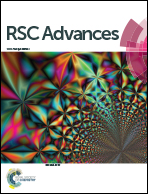Nano-Sn doped carbon-coated rutile TiO2 spheres as a high capacity anode for Li-ion battery
Abstract
Nano-Sn doped carbon-coated rutile TiO2 spheres (C-NS/TiO2-1 and C-NS/TiO2-2) as an improved TiO2-based anode for Li-ion batteries were in situ fabricated. The physical characteristics of the C-NS/TiO2 spheres were tested by X-ray diffraction (XRD), scanning electron microscopy (SEM) and transmission electron microscopy (TEM). Their electrochemical properties were characterized by cyclic voltammograms (CVs), electrochemical impedance spectra (EIS) and galvanostatic charge–discharge cycles. The results indicated that the as-prepared samples had particle sizes ranging from 1 to 5 μm and were composed of several small inner rutile TiO2 spheres, an outer mesoporous carbon coating layer and nano-Sn inhabited in the outer carbon layer. Their electronic conductivity was significantly enhanced owing to high electronic conductivity of the carbon layer and nano-Sn. Moreover, their reversibility capacity was also significantly improved due to the high specific capacity of nano-Sn. The C-NS/TiO2-1 and C-NS/TiO2-2 delivered a reversible capacity of 143.1 and 219.0 mA h g−1, respectively, after 200 cycles at a high current density of 500 mA g−1, which was increased by 52.0% and 132.6% compared to carbon-coated rutile TiO2 (C-TiO2).


 Please wait while we load your content...
Please wait while we load your content...